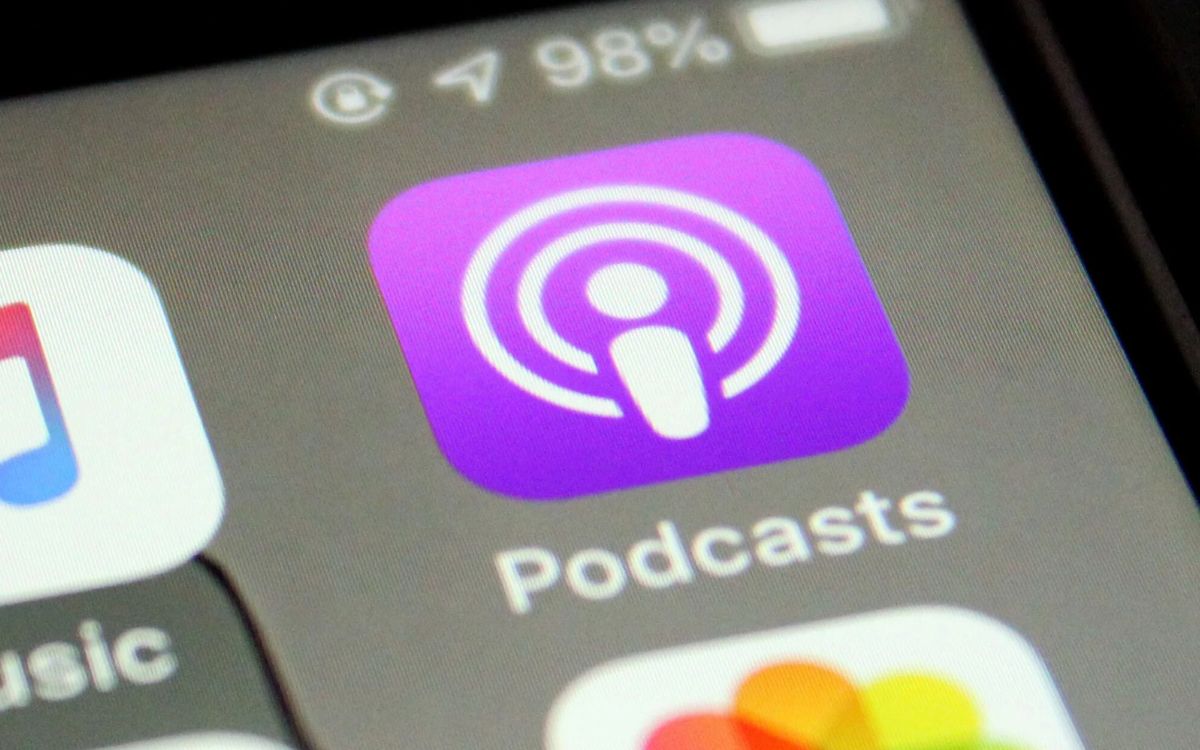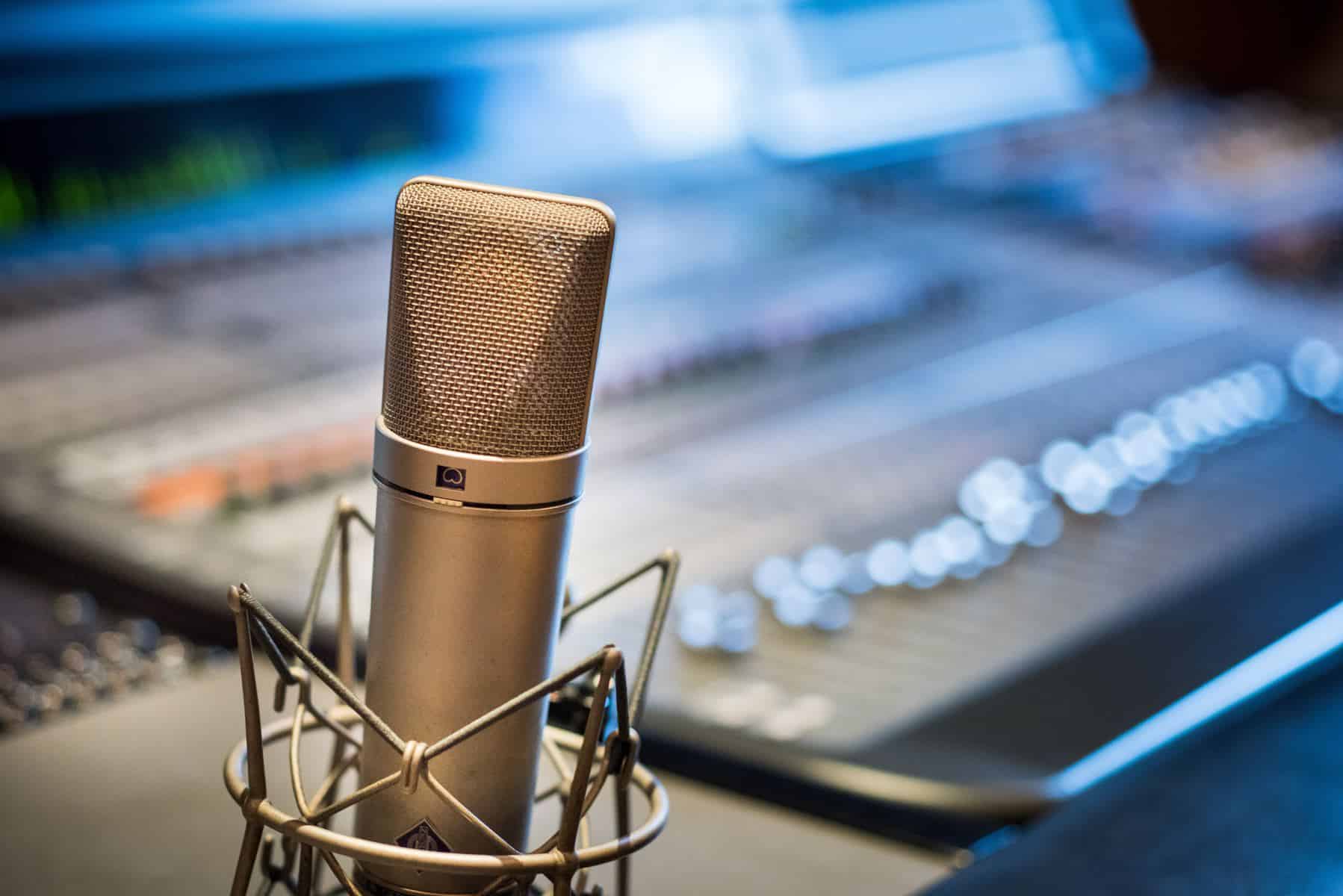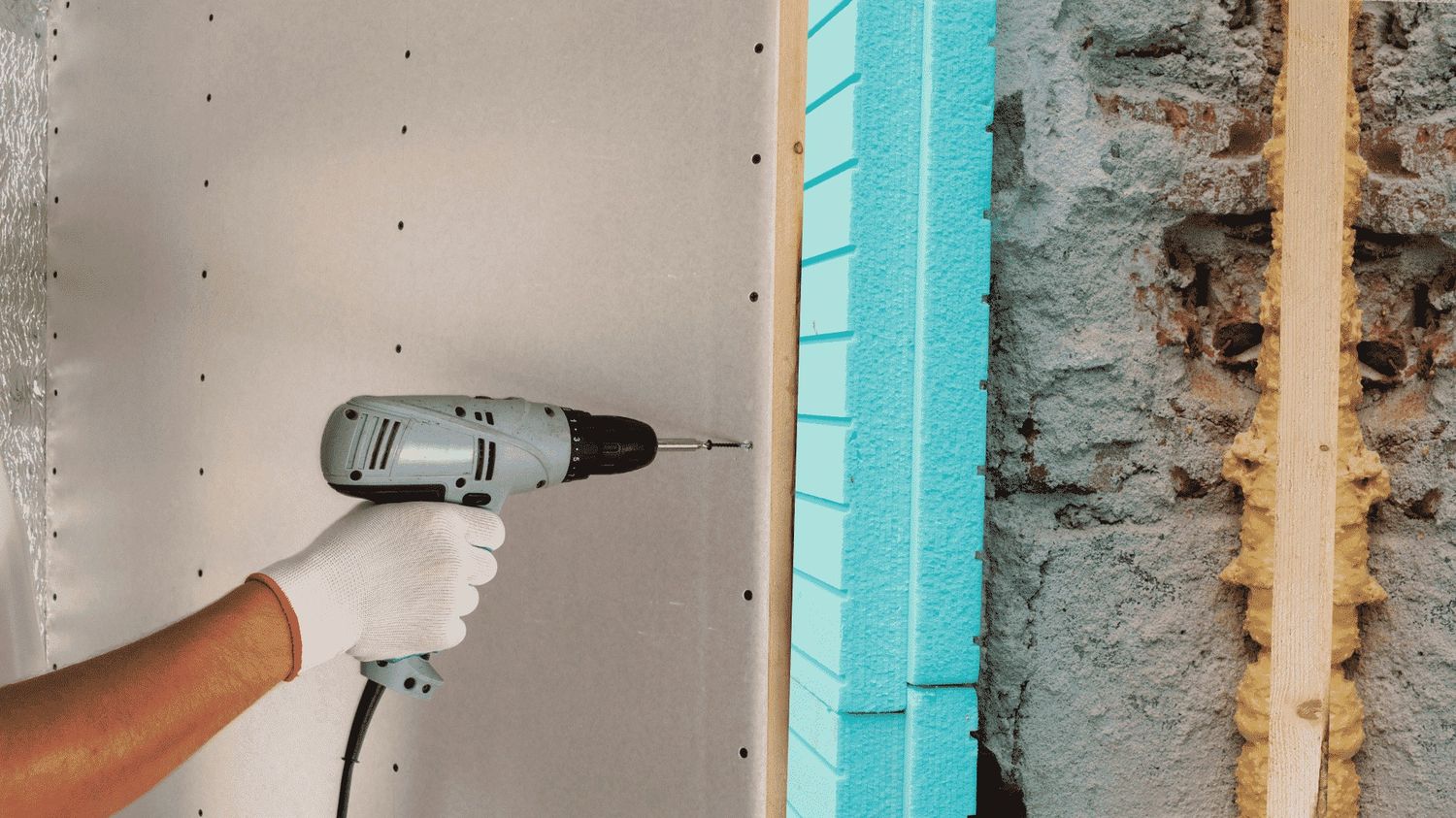Home>Events & Info>Podcast>How Much Does It Cost To Put A Podcast On Apple


Podcast
How Much Does It Cost To Put A Podcast On Apple
Modified: January 22, 2024
Find out the cost of placing your podcast on Apple. Learn about the fees and expenses involved in getting your podcast on the biggest platform for podcasting.
(Many of the links in this article redirect to a specific reviewed product. Your purchase of these products through affiliate links helps to generate commission for AudioLover.com, at no extra cost. Learn more)
Table of Contents
Introduction
Podcasts have become increasingly popular in recent years, offering a unique way for individuals and businesses to share knowledge, entertain, and connect with audiences. With millions of listeners tuning in to their favorite shows, it’s no wonder that many are interested in starting their own podcast.
If you’re considering putting your podcast on Apple, one of the most popular podcast platforms, you may be wondering about the costs involved. Apple Podcasts dominates the podcasting landscape, with over 1.5 million shows and billions of downloads.
In this article, we’ll delve into the key requirements for putting a podcast on Apple and explore the costs associated with hosting, distribution, and submission. We’ll also provide insights into the submission process and discuss potential additional costs you might encounter along the way.
Before we dive into the details, it’s important to note that while there are costs involved in launching and maintaining a podcast, the barrier to entry is relatively low compared to other forms of media like television or radio. With a little planning and budgeting, you can make your podcast dreams a reality and potentially reach a wide audience of dedicated listeners.
So, let’s break it down and find out just how much it costs to put a podcast on Apple Podcasts.
Requirements for Putting a Podcast on Apple
Before you can put your podcast on Apple, there are a few essential requirements you need to meet. These requirements ensure that your podcast meets the standards set by Apple and is eligible for inclusion in the Apple Podcasts directory.
First and foremost, you’ll need to have a completed and polished podcast episode or series ready for submission. Apple requires that your podcast contains at least one complete episode before it can be reviewed and approved.
In addition to content, you’ll also need to have the following elements in place:
- Podcast Title: Choose a catchy and descriptive title for your podcast that accurately represents its content.
- Podcast Description: Provide a compelling and concise description of your podcast. This description should give potential listeners an idea of what your show is about and why they should tune in.
- Podcast Artwork: Create eye-catching podcast artwork that meets Apple’s strict specifications. Your artwork should effectively represent your podcast and be visually appealing when displayed in the Apple Podcasts directory.
- Valid RSS Feed: Your podcast needs to have a valid RSS feed that conforms to Apple’s technical requirements. This feed acts as a “link” between your podcast hosting platform and Apple Podcasts, allowing for seamless distribution and updates of your episodes.
- Podcast Hosting: You’ll need a reliable podcast hosting platform to store and deliver your podcast episodes. Your hosting platform will generate and manage your RSS feed, provide analytics, and ensure your podcast is accessible to listeners across various podcast platforms.
Meeting these requirements is crucial for a smooth submission process and getting your podcast approved by Apple. Once you have everything in order, you’re ready to move on to the next steps of creating and producing your podcast.
Creating and Producing a Podcast
Creating and producing a podcast involves several key steps to ensure that your content is engaging, well-produced, and ready for distribution. By following these steps, you can create a high-quality podcast that stands out and resonates with your target audience.
Step 1: Define Your Podcast Concept and Format
Start by identifying the focus and purpose of your podcast. What topics will you cover? Who is your target audience? Will it be an interview-style show or a solo-host format? Clarifying these aspects will help guide your content creation and ensure consistency throughout your episodes.
Step 2: Plan Your Episodes and Create a Production Schedule
Create a roadmap for your podcast episodes. Determine the length, structure, and main points of each episode, as well as any guest appearances or recurring segments. This will help you stay organized and maintain a consistent release schedule.
Step 3: Procure Recording Equipment and Software
Invest in a reliable microphone, headphones, and a quiet recording space. There are various options available to suit different budgets and needs. Additionally, choose editing software that allows you to enhance your audio quality and make necessary adjustments.
Step 4: Record and Edit your Episodes
Set up your recording equipment and start capturing your podcast episodes. Be mindful of your audio quality, speaking clearly and at an appropriate volume. Once recorded, use your chosen editing software to edit out any errors, add music or sound effects, and create a polished final product.
Step 5: Create Podcast Artwork and Write Compelling Show Notes
Your podcast artwork is the visual representation of your show, so it’s essential to create eye-catching and professional-looking artwork that accurately reflects your podcast’s content and style. Write compelling show notes for each episode, summarizing key points and enticing potential listeners to tune in.
Step 6: Choose a Podcast Hosting Platform
Select a podcast hosting platform that meets your needs in terms of storage space, analytics, and ease of use. Upload your episodes, add metadata such as titles and descriptions, and generate an RSS feed that will allow your podcast to be distributed to various podcast platforms.
By following these steps, you’ll be well on your way to creating and producing a podcast that is ready for distribution. Once you have your episodes and all the necessary elements in place, it’s time to explore the hosting and distribution costs associated with putting your podcast on Apple Podcasts.
Hosting and Distribution Costs
When it comes to hosting and distributing your podcast, there are several costs to consider. Let’s break down the main components of hosting and distribution costs for your podcast.
1. Podcast Hosting:
Podcast hosting is a crucial aspect of making your episodes available to listeners. Hosting providers offer storage space for your audio files and generate the necessary RSS feed that allows podcast directories like Apple Podcasts to access and display your episodes. While some hosting platforms offer free plans, they often come with limitations in terms of storage space and features. Paid hosting plans typically offer more storage, advanced analytics, and additional benefits. Hosting costs can vary depending on factors such as the size and duration of your episodes, but on average, you can expect to pay around $10 to $20 per month for a quality hosting service.
2. Bandwidth and Storage:
As your podcast grows in popularity, your episodes will be downloaded by more listeners, increasing your bandwidth usage. Many podcast hosting platforms charge additional fees based on the number of downloads or the amount of bandwidth used. Similarly, storage costs may increase as you upload more episodes. It’s important to factor in these potential costs when planning your podcast budget.
3. Distribution to Apple Podcasts:
While Apple Podcasts itself doesn’t charge a fee for distributing your podcast, your hosting platform may have additional costs for submitting your podcast to Apple and other directories. Some hosting providers include this feature in their plans, while others charge a one-time or annual fee for submitting to Apple Podcasts. Be sure to check with your hosting provider for any associated costs.
4. Sponsored Hosting:
If you’re looking to offset some of your podcasting costs, you may consider seeking sponsorship opportunities. Sponsored hosting involves partnering with a company or brand that aligns with your podcast’s niche or target audience. In exchange for promoting their products or services, you may receive financial compensation or other benefits. Keep in mind that landing sponsorships may require an established audience and an engaging podcast with consistent episode releases.
It’s important to carefully consider the hosting and distribution costs when budgeting for your podcast. While these costs may seem daunting at first, they are essential for reaching your target audience and growing your podcast’s visibility and success.
Submitting a Podcast to Apple Podcasts
Once you have created your podcast content, prepared the necessary elements, and chosen a hosting platform, the next step is submitting your podcast to Apple Podcasts. Here’s a step-by-step guide on how to submit your podcast to the Apple Podcasts directory:
- Create an Apple ID: If you don’t have one already, you’ll need to create an Apple ID. This will allow you to access the Apple Podcasts Connect platform, where you can manage your podcast.
- Prepare Your Podcast Information: Ensure you have all the required information ready, such as your podcast title, description, artwork, and website URL.
- Validate Your Podcast RSS Feed: Before submitting to Apple, it’s essential to validate your podcast RSS feed using an online service or podcast hosting platform tools. This ensures that your feed meets the technical requirements set by Apple.
- Log in to Apple Podcasts Connect: Visit Apple Podcasts Connect (podcastsconnect.apple.com) and log in using your Apple ID.
- Add Your Podcast: Click on the “+” button to add a new podcast. Enter your podcast’s RSS feed URL and click “Validate.” Apple will verify your feed and retrieve the required information.
- Submit Your Podcast: Review the information imported from your RSS feed and make any necessary edits. Once you’re satisfied, click “Submit” to send your podcast for review.
- Wait for Review and Approval: Apple will review your podcast submission, ensuring that it meets their content and technical guidelines. The review process typically takes a few business days, but it can vary.
- Check Status and Troubleshoot: You can monitor the status of your submission in Apple Podcasts Connect. If any issues arise during the review process, Apple will provide guidance on how to resolve them and resubmit your podcast.
- Receive Confirmation and Go Live: Once your podcast is approved, you’ll receive a confirmation email. Your podcast will then be listed in the Apple Podcasts directory, and listeners can start discovering and subscribing to your show.
Remember, it’s crucial to review and adhere to Apple’s content guidelines to ensure your podcast gets approved. These guidelines include requirements regarding explicit content, copyright infringement, and misleading information.
Submitting your podcast to Apple Podcasts is an exciting step towards reaching a broader audience and growing your podcast following. By following the submission process and guidelines, you can make your podcast available to millions of potential listeners all around the world.
Apple Podcasts Submission Process
The submission process for Apple Podcasts involves several steps to ensure that your podcast meets Apple’s guidelines and is ready for inclusion in the Apple Podcasts directory. Here’s an overview of the submission process:
- Gather Required Information: Before submitting your podcast, make sure you have all the necessary information prepared. This includes your podcast title, description, author name, artwork, and episode metadata such as titles, descriptions, and episode numbers.
- Validate Your RSS Feed: It’s crucial to validate your podcast’s RSS feed using online tools or built-in features provided by your podcast hosting platform. This ensures that your feed adheres to Apple’s technical requirements and will display correctly in the Apple Podcasts directory.
- Create an Apple ID: If you don’t have an Apple ID, you’ll need to create one to access Apple Podcasts Connect, the platform for podcast submissions and management.
- Log in to Apple Podcasts Connect: Visit podcastsconnect.apple.com and log in using your Apple ID credentials. This is where you’ll submit and manage your podcast.
- Add Your Podcast: Click on the “+” button to add a new podcast. Enter your podcast’s RSS feed URL and click “Validate.” Apple will verify your feed and retrieve information such as your podcast artwork and metadata.
- Review and Edit Podcast Information: Review the information imported from your RSS feed and make any necessary edits. This includes verifying that your podcast artwork meets Apple’s specifications and ensuring your metadata accurately describes your podcast and its episodes.
- Submit Your Podcast: Once you’re satisfied with the information, click “Submit” to send your podcast for review. Keep in mind that after submitting, you won’t be able to make changes to your podcast information until Apple approves it.
- Wait for Review: Apple will review your podcast submission, typically within a few business days. During the review process, Apple ensures that your podcast meets their content and technical guidelines.
- Receive Approval: If your podcast meets Apple’s guidelines, you’ll receive an approval email. This means your podcast is now live in the Apple Podcasts directory and available to listeners.
It’s important to note that the review process may take longer during peak periods, so patience is key. If Apple encounters any issues during the review, they may provide feedback and instructions on how to resolve them. Once your podcast is approved, you can start promoting it and reaching a wider audience on Apple Podcasts.
Remember to regularly log in to your Apple Podcasts Connect account to manage your podcast, upload new episodes, and access analytics to track your podcast’s performance on Apple Podcasts.
By following the submission process and adhering to Apple’s guidelines, you can successfully submit your podcast to Apple Podcasts and make it available to millions of listeners around the world.
Apple Podcasts Hosting and Analytics
Apple Podcasts provides more than just a platform for submitting and distributing your podcast. It also offers hosting and analytics features to help you manage and track the performance of your podcast. Let’s explore the hosting and analytics capabilities provided by Apple Podcasts:
1. Hosting:
While Apple Podcasts doesn’t directly offer hosting services, it acts as a directory that connects listeners to your podcast hosted on an external platform. This means you’ll need to choose a podcast hosting platform to store and deliver your podcast episodes. Your hosting platform will provide an RSS feed that connects to Apple Podcasts, allowing your episodes to be accessible on the platform.
2. Analytics:
Apple Podcasts provides basic analytics to podcast creators through Apple Podcasts Connect. These analytics offer insights into your podcast’s performance, including the number of unique devices that have downloaded or streamed your episodes, episode popularity, and subscriber trends.
While Apple Podcasts analytics provide a snapshot of your podcast’s performance on Apple’s platform, it’s important to note that these analytics are limited to Apple Podcasts and do not cover the entire podcasting landscape. To gain a more comprehensive view of your podcast’s performance, you may want to consider utilizing additional analytics tools offered by your podcast hosting platform or third-party analytics services.
Third-party analytics services can provide more in-depth data, including geographic breakdowns, listener engagement metrics, and referral sources. These insights can help you make informed decisions about your podcast’s content, marketing, and growth strategies.
It’s worth mentioning that Apple respects user privacy and anonymizes listener data in their analytics, ensuring the protection of their users’ information.
By utilizing Apple Podcasts analytics and combining them with additional analytics tools, you can gain a better understanding of your audience, track your podcast’s growth, and optimize your content to cater to your listeners’ preferences.
Remember, while Apple Podcasts is a significant platform in the podcasting world, don’t solely rely on its analytics. Use a combination of analytics tools to get a holistic view of your podcast’s performance across various platforms and take data-driven actions to improve your show.
Potential Additional Costs
While there are standard costs associated with hosting, distribution, and submitting a podcast to Apple Podcasts, it’s essential to be aware of potential additional costs that you may encounter along your podcasting journey. These additional costs can vary depending on your podcast’s specific needs and goals. Here are some potential additional costs to consider:
1. Equipment and Software:
Investing in quality recording equipment, such as microphones, headphones, and audio editing software, is essential to ensure a professional-sounding podcast. These upfront costs can range from budget-friendly options to high-end professional equipment.
2. Music Licensing:
If you plan to use copyrighted music in your podcast, you may need to obtain licenses or pay royalties to the respective artists or music rights organizations. There are also royalty-free music libraries available, but they may require a subscription or one-time payment for usage rights.
3. Professional Editing and Production:
While many podcasters choose to edit their episodes themselves, some opt to outsource editing and production to professional audio editors. This can ensure a polished final product but comes with an additional cost, especially if you have a large volume of episodes or complex post-production needs.
4. Transcription Services:
Transcribing your podcast episodes can enhance accessibility and SEO. However, professional transcription services often come with a cost per minute of audio. There are also automated transcription services available at a lower cost, but they may require manual editing for accuracy.
5. Podcast Artwork Design:
While you can create your podcast artwork yourself, you might consider hiring a graphic designer to create eye-catching and professional artwork. Depending on the complexity and expertise of the designer, artwork design costs can vary.
6. Marketing and Promotion:
To grow your podcast’s audience and increase visibility, you may need to allocate a budget for marketing and promotional activities. This can include paid advertising on social media platforms, podcast directories, or collaboration with influencers or podcast networks.
7. Website and Hosting Costs:
If you decide to create a dedicated website for your podcast, there may be costs associated with domain registration, website hosting, and website design or development.
8. Professional Services:
Depending on your podcast’s needs, you might consider outsourcing certain tasks to professionals, such as SEO optimization, show notes writing, social media management, or guest booking services. These services can help streamline your podcasting process but come with a price.
It’s important to remember that not all of these additional costs are necessary for every podcast. Consider your specific goals, budget, and resources when determining which additional costs are worth investing in for your podcasting journey.
By carefully planning and budgeting for potential additional costs, you can ensure a smooth and successful podcasting experience while maintaining control over your financial commitments.
Conclusion
Putting a podcast on Apple Podcasts can be an exciting and rewarding venture. While there are costs involved, the barriers to entry are relatively low compared to other forms of media. By understanding the requirements, creating engaging content, and utilizing the right hosting and distribution platforms, you can make your podcast accessible to millions of potential listeners.
When considering the costs, it’s important to account for podcast hosting, bandwidth, and potential additional expenses such as equipment, marketing, and professional services. By carefully budgeting and planning, you can ensure that your podcast remains sustainable and continues to grow.
Remember that hosting your podcast on Apple Podcasts is just the first step. It’s essential to monitor your podcast’s performance through analytics provided by Apple and other analytics tools. This data will help you understand your audience, track growth, and make informed decisions to improve your podcast’s content and reach.
Lastly, don’t forget the power of marketing and promotion. Utilize various marketing strategies to increase your podcast’s visibility and attract new listeners. Engage with your audience through social media, collaborate with other podcasters, and seek out potential sponsorship opportunities to offset some of the costs.
Putting a podcast on Apple Podcasts can be a fulfilling experience, allowing you to share your passion, knowledge, and creativity with a global audience. With careful planning, dedication, and continuous improvement, your podcast has the potential to thrive on this popular platform and reach new heights.











